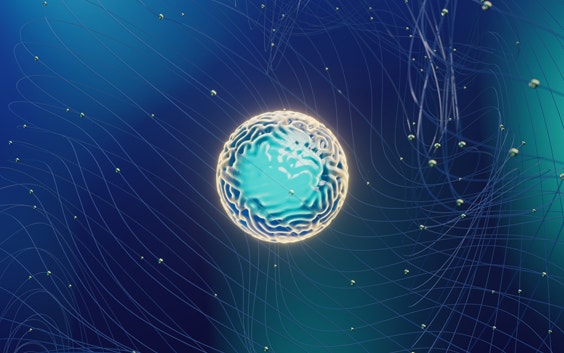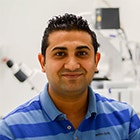
INTERVIEW
Mimics Innovation Awards Finalist: Dr. Amr Elsawy
Characterization of Size, Shape, and Pattern of Flow in the Neo-aorta and Pulmonary Artery in a Patient Following an Innovative Technique of Repair for Truncus Arteriosus
What was the dream?
To validate a novel method for the surgical correction of truncus arteriosus (TA) and make this technique the new standard for the treatment of TA.
What was the challenge?
Truncus arteriosus is a rare congenital heart defect in which a single artery, rather than a separate aorta and pulmonary artery, arises as a common outflow for both the left and right ventricles, with a ventricular septal defect (VSD) between both ventricles. Babies with TA have abnormal mixing of oxygenated and deoxygenated blood, thus failing to deliver normal blood to the body and flooding the lungs with excessive blood flow, necessitating prompt surgical repair. When not corrected in infancy, there is only a 12% chance of survival beyond one year. Currently, there is no consensus on the ideal technique for TA repair.
What are the results?
The Aswan Heart Centre (AHC) team developed an innovative technique to repair truncus arteriosus by using autologous vascular tissue instead of allogenic valve or patch material. For this novel approach, first, the origin of the pulmonary artery branches is detached from the truncus and attached to a newly tailored right ventricle outflow. A segment of the native truncal root is excised to reconstruct the anterior hood of the right ventricular outflow. Then, the ascending aorta is connected to the truncal root, and the VSD is closed.
This technique was used in the treatment of a three-month-old female patient who was diagnosed with truncus arteriosus type I. Both pre- and post-operative CT images were imported into Materialise Mimics to reconstruct the 3D models and characterize the size and shape of the truncus arteriosus (pre-op) and neo-aorta and neo-pulmonary artery (post-op). Moreover, a post-operative pattern of flow was characterized using a 4D flow MRI. This revealed that the flow in the neo-aorta and neo-pulmonary artery in early and peak systole appear to approximate normality. We will await confirmation in a larger number of patients followed up for a longer period of time.
Why this research won
As they are at the forefront of delivering the highest quality surgical service for a large population of young children suffering from a variety of complex congenital heart diseases, notably truncus arteriosus, the AHC team aims to refine their practice to achieve the best outcomes. Utilizing the novel ‘Aswan’ Technique will offer patients an all-autologous solution for reconstructing the neo-aorta and pulmonary artery, with a potential for growth, thus decreasing the rate of potential re-interventions that would have been required if a non-viable alternative were used. Moreover, the technique avoids reliance on synthetic patches and xenografts, providing an economic advantage to the practice in an underserved community.
The AHC team utilized Materialise medical software to produce accurate personalized 3D models for surgical planning in order to study the morphology and characterize the flow using CMR images, enhancing the technique outcomes. This research shows promising results for the improvement of patient care. While the AHC team proved that this innovative and personalized approach benefits the clinical outcome for this three-month-old, we believe that this technique will improve many more patients’ lives in the future.
L-102993-01
Share on:

Biography
Dr. Amr Elsawy
You might also like
Never miss a story like this. Get curated content delivered straight to your inbox.
